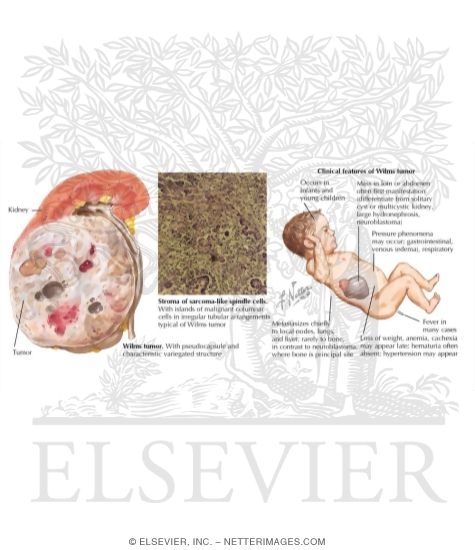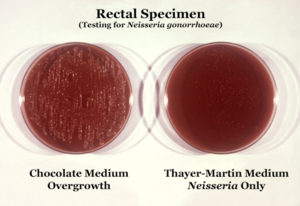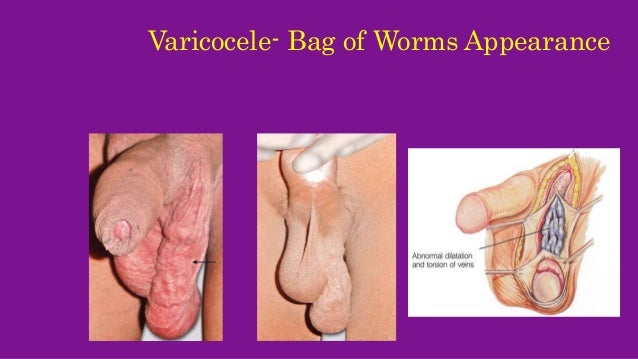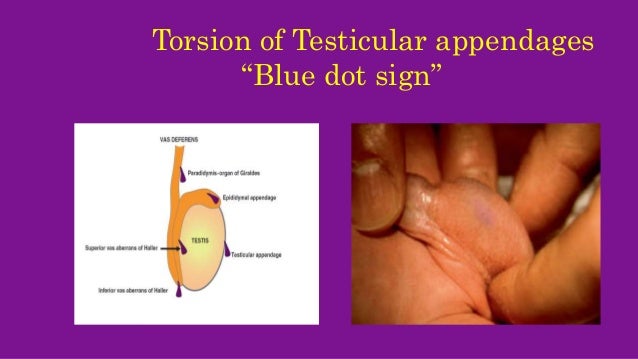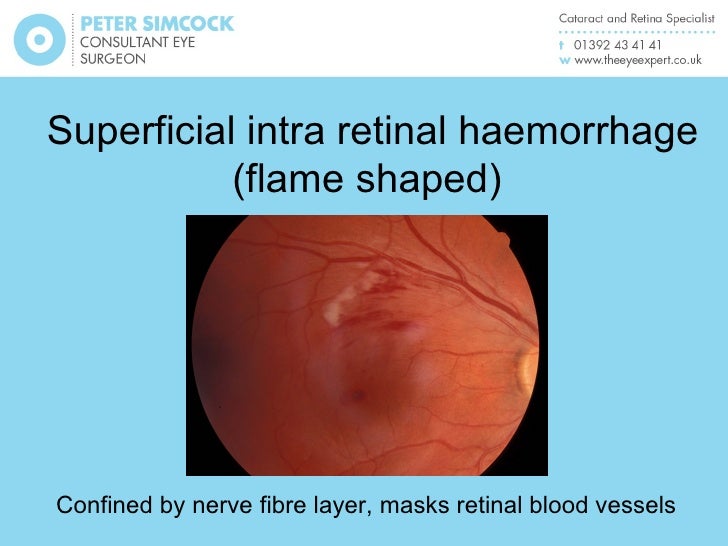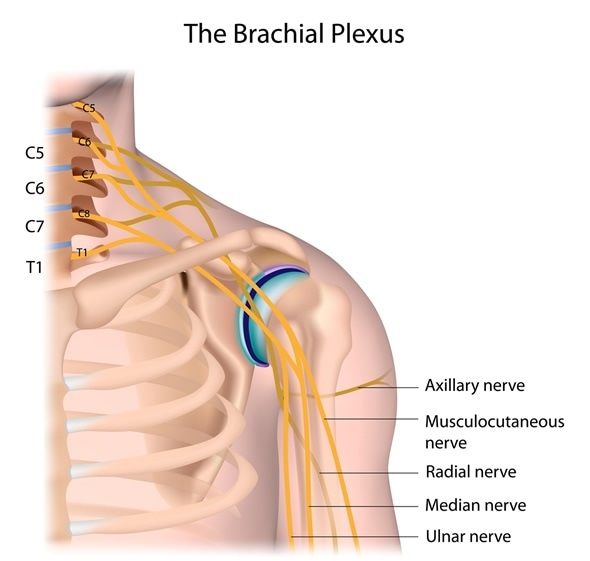The clinician should remember this axiom in dermatology: “There are more errors made by not looking than by not knowing.”
Wonder Me!
Key minerals to help control blood pressure
A healthy, balanced diet plays a major role in blood pressure control. And you should consume some specific minerals on a regular basis for good blood pressure management: calcium, magnesium, and potassium. But do most of us get enough of these? "If you're eating a healthy diet, you probably have nothing to worry about. But people eating a diet of processed and canned foods might need to be concerned, as well as people taking certain medications," says Dr. Randall Zusman, director of the Division of Hypertension at the Massachusetts General Hospital Heart Center.
 Images: Thinkstock 1/2 cup canned white beans: 595 milligrams (mg) of potassium, 67 mg of magnesium, and 96 mg calcium. |
 3 ounces of cooked halibut: 490 mg of potassium, and 91 mg of magnesium. |
 1/2 cup cooked spinach: 419 mg potassium, 78 mg of magnesium, and 146 mg of calcium. |
1 Potassium
Normal body levels of potassium are important for muscle function, including relaxing the walls of the blood vessels. This lowers blood pressure and protects against muscle cramping. Normal potassium levels also are important for the conduction of electrical signals in the nervous system and in the heart. This protects against an irregular heartbeat.
Potassium is found naturally in many foods, such as prunes, apricots, sweet potatoes, and lima beans. But food may not be enough to keep up your potassium levels if you take a diuretic for high blood pressure such as hydrochlorothiazide (Esidrix, HydroDiuril). These drugs cause potassium to leave your body in the urine, thereby lowering your body's potassium levels. "I'd say at least a third of patients on diuretics for heart failure or high blood pressure or edema don't get enough potassium from their diets. In those cases, we do use supplements," says Dr. Zusman. Don't try a supplement on your own. Too much potassium, like too little, can lead to dangerous irregular heart rhythms.
The Recommended Dietary Allowance (RDA) of potassium is 4.7 grams per day for both men and women ages 51 and older.
2 Magnesium
Magnesium helps regulate hundreds of body systems, including blood pressure, blood sugar, and muscle and nerve function. We need magnesium to help blood vessels relax, and for energy production, bone development, and transporting calcium and potassium. Just like potassium, too much magnesium can be lost in urine due to diuretic use, leading to low magnesium levels.The National Institutes of Health (NIH) reports that most older adults in the U.S. don't get the proper amount of magnesium in their diets, although extreme magnesium deficiency is very rare. It's best to get the mineral from food, especially dark, leafy green vegetables, unrefined grains, and legumes. The RDA of magnesium is 420 milligrams (mg) per day for men ages 50 and older; 320 mg/day for women ages 50 and older.
Too much magnesium from a supplement or from magnesium-containing drugs such as laxatives may cause diarrhea. There are no known adverse affects of magnesium intake from food.
3 Calcium
Calcium is important for healthy blood pressure because it helps blood vessels tighten and relax when they need to. It's also crucial for healthy bones and the release of hormones and enzymes we need for most body functions. We consume it naturally in dairy products, fish with bones (such as canned salmon and sardines), and dark, leafy greens.The RDA of calcium for men ages 51 and older is between 1,000 and 1,200 mg per day. For women ages 51 and older it's 1,200 mg per day. Unfortunately, most people get about 700 mg of calcium in their daily diet. So should you take a supplement to make up the difference?
That's tricky business. As we reported in June 2013, some evidence shows calcium supplements increase the risk of death from heart disease. "It's been controversial, so most of us advise our patients to get their calcium from food rather than from supplement pills," says Dr. Zusman. If it's not possible to get enough calcium from food, you can use a low-dose calcium supplement to reach your daily RDA.
Wonder Me!
http://www.rhymezone.com/
Mnemonics in part is created by similar sounds. I found this website http://www.rhymezone.com/ helpful for creating similar sounds such as Thyer-Martin = Thigh-er Martyr mnemonics that I've made.
~by Qt
Mnemonics in part is created by similar sounds. I found this website http://www.rhymezone.com/ helpful for creating similar sounds such as Thyer-Martin = Thigh-er Martyr mnemonics that I've made.
~by Qt
Wonder Me!
Thayer-Martin agar
From Wikipedia, the free encyclopedia
Comparison of two culture media types used to grow Neisseria gonorrhoeae bacteria.
Known as overgrowth, note that the non-selective chocolate agar medium on the left, due to its composition, allowed for the growth of organismal colonies other than those of Neisseria gonorrhoeae, while the selective Thayer-Martin medium on the right, containing antimicrobials that inhibit the growth of organisms other than N. gonorrhoeae, shows no overgrowth, but is positive for N. gonorrhoeae bacteria.
Known as overgrowth, note that the non-selective chocolate agar medium on the left, due to its composition, allowed for the growth of organismal colonies other than those of Neisseria gonorrhoeae, while the selective Thayer-Martin medium on the right, containing antimicrobials that inhibit the growth of organisms other than N. gonorrhoeae, shows no overgrowth, but is positive for N. gonorrhoeae bacteria.
Components
It usually contains the following combination of antibiotics, called VCN inhibitor- Vancomycin, which is able to kill most Gram-positive organisms, although some Gram-positive organisms such as Lactobacillus and Pediococcus are intrinsically resistant
- Colistin, which is added to kill most Gram-negative organisms except Neisseria, although some other Gram-negative organisms such as Legionella are also resistant
- Nystatin, which can kill most fungi
- Trimethoprim, which inhibits Gram-negative organisms, especially swarming Proteus
Clinical implications
A negative culture on Thayer-Martin in a patient exhibiting symptoms of pelvic inflammatory disease most likely indicates an infection with Chlamydia trachomatis.Mnemonics: Thayer-Martin = Thigh-er Martyr = a martyr who keeps trying to get in the thighs of ppl = Gonorrhea selected (selective!) - (Reproduction okay with credits to npprep.blogspot.com)
Wonder Me!
Varicocele = Varicose eel = Due to varicose veins leading to eels (worms) in the skinny bag (aka scrotum) = bag of worms ~by Qt (Reproduction okay with credits to npprep.blogspot.com)
Wonder Me!
Upon examination, a classic "blue-dot sign" (ie, a tender nodule with
blue discoloration on the upper pole of the testis) may be seen; this
finding on the upper scrotum is a typical finding in torsion of the
appendix testis (see the image below). However, in the acute setting,
differentiating testicular torsion from torsion of the appendix is often
impossible, and scrotal exploration should be performed whenever the
diagnosis is uncertain
Wonder Me!
The side-effects include: Fever. Up to half of the children who receive
DTP vaccine may have a fever in the evening after receiving the
injection. The fever should disappear within a day. Note that a fever
that begins more than 24 hours after a DTP injection is not likely to be
a reaction to the vaccine.
Wonder Me!
How to NOT NOT Handle EXCEPT Questions on the GMAT
To set up this article, please try the following test:For the next 10 seconds, do NOT think about a bear wearing a dress while riding a unicycle into a pool filled with Superbowl rings.
How did you do? If you passed that test, the next test should be easy.
As quickly as possible, name 2 people who are NOT former U.S. Presidents.
This last question should be painfully easy since almost every person in the world meets the condition of not being a former U.S. President. However, when confronted with this question, many of us are momentarily taken aback, because the vast majority of our schooling has taught us to look for answers to questions, and EXCEPT questions ask us to find something that is not the answer to a question. For this reason, many people are prone to making silly mistakes answering relatively easy EXCEPT questions.
Consider the following:
Each of the following people is a former U.S. President EXCEPT
(A) Abraham Lincoln
(B) George Washington
(C) Bugs Bunny
(D) Jimmy Carter
(E) George Bush
This question is similar to the unicycle-riding-bear test. Once we’ve
read the question, we immediately begin thinking of former U.S.
Presidents. So, when we examine answer choice (A), we see that it
matches what we were already thinking about and, as a result, we may
instinctively select (A) by mistake.To avoid this potential pitfall, it’s useful to take EXCEPT questions and reword them as positive, proactive directives. For example, we can take the above question and reword it
Wonder Me!
UTI = E.Coli
NGU = Chlamydia (Non-gonoccocal urethritis)
NGU = Chlamydia (Non-gonoccocal urethritis)
Wonder Me!
Signs and symptoms
The majority (98%) of patients with cholesteatoma have ear discharge or hearing loss or both in the affected ear.Other more common conditions, such as otitis externa, may also present with these symptoms, but cholesteatoma is much more serious and should not be overlooked. If a patient presents to a doctor with ear discharge and hearing loss, the doctor should consider the patient to have cholesteatoma until the disease is definitely excluded.
Other less common symptoms (all less than 15%) of cholesteatoma may include: pain, balance disruption, tinnitus, ear ache, headaches and bleeding from the ear. There can also be facial nerve weakness. Balance symptoms in the presence of a cholesteatoma raises the possibility that the cholesteatoma is eroding the balance organs, which form part of the inner ear.
On initial inspection, an ear canal full of discharge may be all that is visible. Until the doctor has cleaned the ear and inspected the entire tympanic membrane, cholesteatoma cannot be either confirmed or excluded.
Once the debris is cleared, cholesteatoma can give rise to a number of appearances. If there is significant inflammation, the tympanic membrane may be partially obscured by an aural polyp. If there is less inflammation, the cholesteatoma may present the appearance of 'semolina' discharging from a defect in the tympanic membrane. The posterior and superior parts of the tympanic membrane are most commonly affected. If the cholesteatoma has been dry, the cholesteatoma may present the appearance of 'wax over the attic'. The attic is just above the ear drum.
The patient may commonly also have clinical signs of conductive hearing loss. Less frequently, there may be signs of imbalance or facial weakness.
If untreated, a cholesteatoma can eat into the three small bones located in the middle ear (the malleus, incus and stapes, collectively called ossicles), which can result in nerve deterioration, deafness, imbalance and vertigo. It can also affect and erode, through the enzymes it produces, the thin bone structure that isolates the top of the ear from the brain, as well as lay the covering of the brain open to infection with serious complications (rarely even death due to brain abscess and septicemia).
Both the acquired as well as the congenital types of the disease can affect the facial nerve that extends from the brain to the face and passes through the inner and middle ear and leaves at the anterior tip of the mastoid bone, and then rises to the front of the ear and extends into the upper and lower face
https://en.wikipedia.org/wiki/Cholesteatoma
ETymology: http://www.sciencedirect.com/science/article/pii/S1879729610000505
Cholesteatoma is a severe middle-ear pathology affecting both adults and children. It would seem to have been first described by De Verney in France in 1683, as what he called “steatoma” [1]. In 1829, the French anatomopathologist Cruveilhier described it as a pearl tumor of the temporal bone [2]. The term “cholesteatoma”, introduced in 1838 by the German physiologist Johannes Müller [3], is now well established, but in fact, etymologically faulty in as much as this benign tumor (“…oma”) contains neither cholesterol (“chole”) nor fat (“steat”). In 1855, Virchow categorized cholesteatoma under epidermoid carcinoma and atheroma, but only in 1861 did Von Troeltsch consider its epidermal origin. In the studies by Gruber, Wendt and Rokitansky (1855–1888), the physiopathology of cholesteatoma was described as a malpighian metaplasia of the middle-ear mucosa in response to chronic inflammation. At the end of the 19th century, Bezold and Habermann overturned this theory, showing that cholesteatoma was caused by migration of external auditory canal skin to the middle ear, induced by chronic inflammation [4]. At the present time, despite numerous investigations, the physiopathology of cholesteatoma has still not been elucidated.
Wonder Me!
Source: https://youtu.be/WrlVbDmCVyw & Leik & Hollier
@Birth: B ---there's only one HepB vax
Visit every 2 months:
@2mo: 2 B DR. HIP (@ 2mo: HepB, DTaP, Rotavirus, Hib, IPV, PCV)
@4mo: 4 DR. HIP (@4mo: DTap, Rotavirus, IPV, PCV)
@6mo: B DR. HIP In 6mo (HepB, Dtap, Rotavirus, Influenza, PCV in 6mo)
12mo - 18mo: 1 MAD HPV (MMR, HepA, Dtap, Hib, PCV, Varicella)
2yo: n/a
3yo: n/a
4-6yo: VERY DIM between 4-6pm (Varicella, Dtap, IPV, MMR)
11-12yo: Tada! Human! Men! (TdaP, HPV, Meningoccocal)
16-18yo: Men get boosted!
Legend:
B: Hep B
D: DTaP
R: Rotavirus
H: Hib
I: IPV
P: PCV
M: MMR
A: HepA
V or Very: Varicella
Tada: TdaP
Human: HPV
Men: MCV
NOTE for California elementary school entry: (by Qt)
Hep B: needs 3 doses (Mnemonics: Hep B = B = Bday = given at Birth, then 2 mo. later, than 4 mo. later (@ birth, 2,6 = 3 doses)
DTaP: needs 5 doses (DR HIP, DR HIP, DR HIP, MAD HPV, & Very DIM)
IPV: needs 4 doses (DR HIP, DR HIP, DR HIP, & Very DIM)
Varicella & MMR: needs 2 doses (Varicella & MMR: live vaccines = must be given after 1 yo (@12mo & @5yo generally speaking)
MCV & HPV: not given until middle school generally
Misc notes (Vax not required for school):
Influenze not given until 6mo and older
R = Rotavirus = only given at very young age, during first few initial visits (@2,4,6mo)
HepA = given @ 1 MAD HPV
USMLE Shortcuts- Easy Immunization schedule(For US only)
Wonder Me!
Mechanism
Normally during inspiration, systolic blood pressure decreases by ≤10 mmHg[1] and pulse slightly increases. This is because inspiration makes intra-thoracic pressure more negative relative to atmospheric pressure, which increases systemic venous return to the right atrium by reducing pressure on the veins, particularly the venae cavae. However, the decrease in intra-thoracic pressure and stretching of the lungs during inhalation also expands the compliant pulmonary vasculature so that blood pools in the lungs and decreases pulmonary venous return to the left atrium. Also, the increased systemic venous return to the right side of the heart expands the right heart and directly compromises filling of the left side of the heart by slightly bulging the septum to the left, reducing maximum volume. Reduced left-heart filling leads to a reduced stroke volume which manifests as a decrease in systolic blood pressure, leading to a faster heart rate due to the baroreceptor reflex, which stimulates sympathetic outflow to the heart.Under normal physiologic conditions the large pressure gradient between the right and left ventricles prevents the septum from bulging dramatically into the left ventricle during inspiration. However such bulging does occur during cardiac tamponade where pressure equalizes between all of the chambers of the heart.[4] Following a zero-sum game principle, as the right ventricle receives more volume it can push the septum into the left ventricle reducing its volume in turn. This additional loss of volume of the left ventricle that only occurs with equalization of the pressures (as in tamponade) allows for the further reduction in volume, so cardiac output is reduced, leading to a further decline in BP. However, in situations where the left ventricular pressure remains higher than the pericardial sac (most frequently from coexisting disease with an elevated left ventricular diastolic pressure), there is no pulsus paradoxus.[5]
Although one or both of these mechanisms may occur, a third may additionally contribute. The large negative intra-thoracic pressure increases the pressure across the wall of the left ventricle (increased transmural pressure, equivalent to [pressure within ventricle] - [pressure outside of ventricle]). This pressure gradient, resisting the contraction of the left ventricle, causes an increase in afterload. This results in a decrease in stroke volume, contributing to the decreased pulse pressure and increased heart rate as described above.
Pulsus paradoxus occurs not only with severe cardiac tamponade, but also with asthma, obstructive sleep apnea and croup. The mechanism, at least with severe tamponade, is likely very similar to those of hypertrophic and restrictive cardiomyopathies (diastolic dysfunction), where a decrease in Left Ventricular (LV) filling corresponds to an increasingly reduced stroke volume. In other words, with these cardiomyopathies, as LV filling decreases, ejection fraction decreases directly, yet non-linearly and with a negative concavity (negative first and second derivatives). Similarly with tamponade, the degree of diastolic dysfunction is inversely proportional to the LV end-diastolic volume. So during inspiration, since LV filling is lesser relative to that during expiration, the diastolic dysfunction is also proportionally greater, so the systolic pressure drops >10 mmHg. This mechanism is also likely with pericarditis, where diastolic function is chastened.
Pulsus Paradoxus = Systolic BP drops during inspiration
Wonder Me!
Mnemonics: Prehn's sign = Positive = ePididymitis = Pull the testicle up = Pain Passed away ~by Qt (Reproduction okay with credits for npprep.blogspot.com)
-----
Wiki:
Prehn's sign (named after urologist Douglas T. Prehn)[1] is a medical diagnostic indicator that was once believed to help determine whether the presenting testicular pain is caused by acute epididymitis or from testicular torsion.[2] Although elevation of the scrotum when differentiating epididymitis from testicular torsion is of clinical value, Prehn's sign has been shown to be inferior to Doppler ultrasound to rule out testicular torsion.[3]
According to Prehn's sign, the physical lifting of the testicles relieves the pain of epididymitis but not pain caused by testicular torsion.[4]
https://en.wikipedia.org/wiki/Prehn%27s_sign
-----
Wiki:
Prehn's sign (named after urologist Douglas T. Prehn)[1] is a medical diagnostic indicator that was once believed to help determine whether the presenting testicular pain is caused by acute epididymitis or from testicular torsion.[2] Although elevation of the scrotum when differentiating epididymitis from testicular torsion is of clinical value, Prehn's sign has been shown to be inferior to Doppler ultrasound to rule out testicular torsion.[3]
According to Prehn's sign, the physical lifting of the testicles relieves the pain of epididymitis but not pain caused by testicular torsion.[4]
- Negative Prehn's sign indicates no pain relief with lifting the affected testicle, which points towards testicular torsion which is a surgical emergency and must be relieved within 6 hours.
- Positive Prehn's sign indicates there is pain relief with lifting the affected testicle, which points towards epididymitis.
https://en.wikipedia.org/wiki/Prehn%27s_sign
Wonder Me!
Cholesterol Charts (what the numbers mean)
| Total cholesterol |
| Less than 200 mg/dL: desirable |
| 200-239 mg/dL: borderline high risk |
| 240 and over: high risk |
Wonder Me!
Wonder Me!
Meniere’s disease features
Meniere’s disease makes it Very Tough to Hear Noise FULLy
- Vertigo
- Tinnitus
- Hearing loss (sensorineural)
- Nauses and vomiting may occur
- FULLness in the ears (feeling of pressure/fullness in ears)
Source: https://medmnemonics.wordpress.com/2011/12/15/menieres-disease-features/
Wonder Me!
FLAT(baso) PG(acido)
1) Acromegaly: too much GH, from acidophil cells of the APit
2) Diabetes Mellitus: lack of Insulin, or Insulin resistance, from beta cells of pancreas, or resistance from omental fat/adipocytes
3) Hashimoto's Disease: lack of TH, from Thyroid gland (autoimmune), possible goiter?
4) Addison's Disease: lack of aldosterone(salt), cortisol(sugar), androgens(sex), from adrenal cortex (destruction)
5) Diabetes Insipidus: central is lack of ADH, from PPit, compared to nephrogenic and psychogenic with water deprivation + ADH administration test
6) Conn's Syndrome: too much aldosterone, from a oat cell carcinoma or adrenal cortex tumor, from Zona Glomerulosa
7) Cushing's Syndrome: too much cortisol, from adrenal cortex, Zona Fasciculata
8) Grave's Disease: too much TH, from Thyroid gland, Exophthalmos and tremors, possible goiter?
1) Acromegaly: too much GH, from acidophil cells of the APit
2) Diabetes Mellitus: lack of Insulin, or Insulin resistance, from beta cells of pancreas, or resistance from omental fat/adipocytes
3) Hashimoto's Disease: lack of TH, from Thyroid gland (autoimmune), possible goiter?
4) Addison's Disease: lack of aldosterone(salt), cortisol(sugar), androgens(sex), from adrenal cortex (destruction)
5) Diabetes Insipidus: central is lack of ADH, from PPit, compared to nephrogenic and psychogenic with water deprivation + ADH administration test
6) Conn's Syndrome: too much aldosterone, from a oat cell carcinoma or adrenal cortex tumor, from Zona Glomerulosa
7) Cushing's Syndrome: too much cortisol, from adrenal cortex, Zona Fasciculata
8) Grave's Disease: too much TH, from Thyroid gland, Exophthalmos and tremors, possible goiter?
Wonder Me!
Finasteride’s effect on PSAIn patients with BPH, finasteride decreases PSA levels by about half. This phenomenon occurs even if a man taking the drug for BPH has prostate cancer. As a result, actual PSA levels for men in the finasteride arm of the PCPT study were doubled to approximate their true PSA.Because the hair-loss drug Propecia is a form of finasteride, it may also lower PSA levels, and men taking it should alert their health care providers. An artificially low, unadjusted PSA level can delay a biopsy and thus the discovery of prostate cancer. |
Wonder Me!
"MD SOAP 'N HAIR":
- Malar rash
- Discoid rash
- Serositis
- Oral ulcer
- Arthritis
- Photosensitivity
- Neurologic abnormality
- Hematologic abnormality
- ANA (+)
- Immunologic abnormality
- Renal involvement
Wonder Me!
http://www.embeediagnostics.com/features/crp.ht2.gif
CSR elevates before ESR (Mnemonics: C before E)
CSR elevates before ESR (Mnemonics: C before E)
Wonder Me!
Avoid these 'BROWS'
B arley
R ye
O at (if it’s not labeled gluten-free)
W heat (includes Kamut, khorasan, einkorn, and farro)
S pelt (which is a species of wheat)
Source: https://lifehacker.com/remember-which-grains-contain-gluten-with-the-brows-acr-1752942006
Okay to eat rice
B arley
R ye
O at (if it’s not labeled gluten-free)
W heat (includes Kamut, khorasan, einkorn, and farro)
S pelt (which is a species of wheat)
Source: https://lifehacker.com/remember-which-grains-contain-gluten-with-the-brows-acr-1752942006
Okay to eat rice
Wonder Me!
